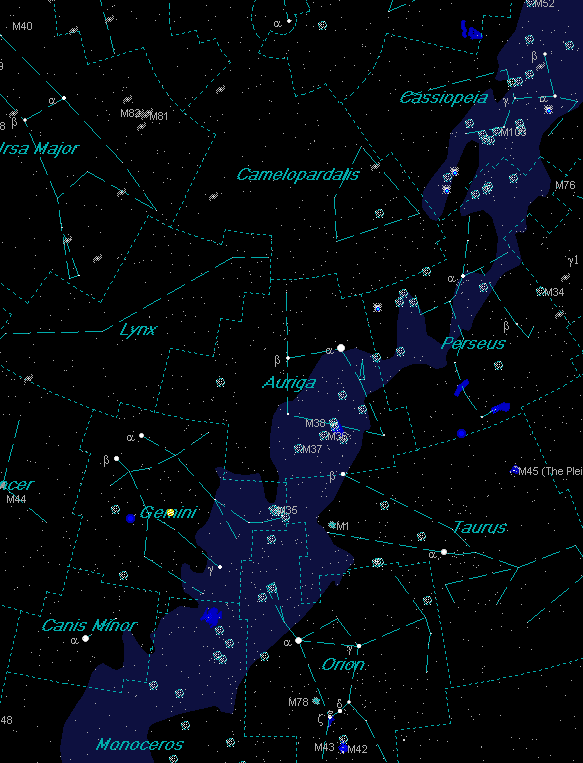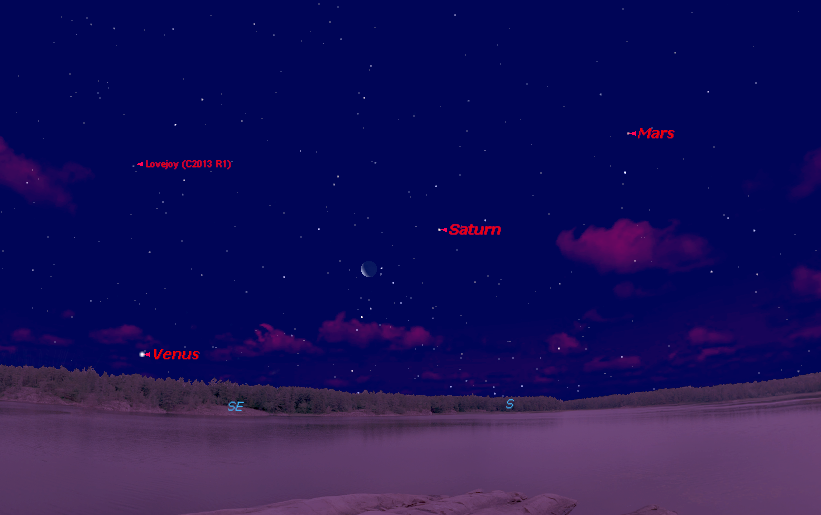The Winter Milky Way - Part 1
When someone utters the words Milky Way, we immediately associate the grand veil seen overhead during warm, mosquito-ridden summer nights. At that time of year, it is quite easy to trace out the collective glow of millions of suns stretching from the famous W of Cassiopeia the Queen in the north to Sagittarius the Archer in the south. To experience this marvellous sight under dark country skies is beyond words. Resting above the southern horizon is the nucleus or heart of our home galaxy.
The Sun and its family of eight planets are embedded in one of the spiral arms of the galaxy, so throughout the year, we get to witness the plane of the Milky Way over our heads. However, the sight in winter is far different than summer. With the Sun now in front of Sagittarius, we turn our attention to the opposite portion – the outer edge or thinnest part of the galaxy.
On a clear moonless night from dark skies, the faint band can still be seen. We now use the W of Cassiopeia as the starting point just like in summer but travel through Perseus, Auriga, down to the left side of Orion the Hunter, through Canis Major and ending at Puppis on the southern horizon. Wide-angle binoculars can sweep up large areas of celestial real estate thus filling your view with stars and distant objects.

Moving down from Cassiopeia, we first catch the famous Double Cluster in Perseus. These two open loose disks of suns are identified as NGC 869 and 884. It is also known by the catalogue number Caldwell 14. Each cluster contains roughly 250 stars. This outstanding pair is some 7,100 and 7,400 light-years away respectively. Each measuring about 30 arc minutes (same size as the full moon).
As you continue through Perseus (the second hunter in the sky) check out Beta Persei also named Algol – the Demon Star. This is actually an eclipsing binary system when the secondary star crosses in front of the primary like clockwork. As a result, its light brightens and fades from magnitude 2.1 to 3.4 in 2.87 days. So every time you look up you could notice a slight difference. This would be a great exercise to sharpen your estimating skills. Refer to page 99 of the 2014 RASC Observer’s Handbook for minimum dates and times.
Auriga holds a nice collection of three open clusters you will come across in order are M38, M36 then M37. The first of the trio is M38 which is about 4,200 light-years from us and some 25 light-years in width. M36 is located 2.3 degrees to the east from M38 and is closer by 100 light-years but smaller at only 14 light-years wide. The best of the three goes to M37 also known as the salt and pepper cluster. This gem of a cluster is about 4,500 light-years distance with hundreds of stars calling this place home including many red giants. You should be able to see it about 3 degrees east of M36.
As you are hunting down and/or imaging the sky, keep an eye open for the Quadrantid meteor shower which peaks on Jan 3rd at 3 p.m. EST. On the heels of last month’s Geminid meteor shower, this is another graceful slow-moving event. The shower can vary from 60 to 200 meteors per hour with an average ZHR=120. As mentioned they are moving at a nice pace of 41 km/sec. The great news is not lunar interference this year. This shower is also known to produce fireballs so be prepared. With all this cold weather an all-nighter might be out of the question. You will have to wait later in the night for the radiant to rise nice and high.
Other than the moon, the next brightest object visible all night is Jupiter. In fact, the King of planets is at opposition on Jan 5 meaning is will rise at sunset and set at sunrise. Just as the full Moon and Sun are on opposite sides of the Earth, so is Jupiter and the Sun. With the planet at its closest distance of 628 million km, we are set up to catch fantastic detail on nights of low turbulence. Please refer to page 231 of the 2014 RASC Observer’s Handbook for satellite and shadow transits across Jupiter.
Over the past few months, we have followed Comet ISON as it brightened and was putting on a great show, Comet Lovejoy was partly stealing the show. It was wonderful having two naked-eye comets in roughly the same area of the sky. Even though ISON did not survive we continued to track, observe and photograph Lovejoy. It is now in the constellation Hercules and rises around 5 a.m. It is still a decent object to enjoy but the calendar is against as Lovejoy is about mag 8.5 and dimming.

Other planets hanging around the sky are Saturn, Mars and Venus are now starting to appear over the eastern horizon during the last week of January. A pretty digital moment comes on the morning of the 26th at around 6:30 a.m. when the thin waning crescent moon joins the planetary trio in a nice line-up.
As for the lunar phases: the new Moon will occur on Jan 1 (lunation 1126) with a close perigee of 356,923 km thus producing high tides. First-quarter is on the 8th. The full Snow Moon Jan 30 will be the smallest full moon of 2014. The new moon on the 30th (lunation 1127).
The Ottawa Centre will be broadcasting their next meeting live on January 3rd at 8 p.m. eastern. Watch it at: ustream.tv/channel/rascottawalive1
Until next month, clear skies everyone.
1: Link was https://video.ibm.com/channel/rascottawalive alt=jquery1388777792118=3
